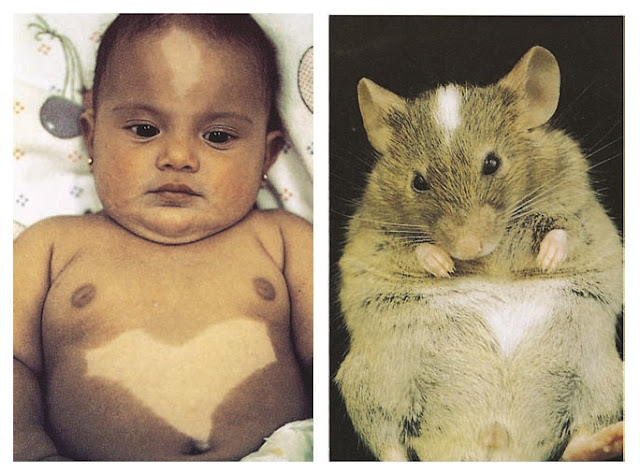VERTEBRATES
The most complex animals are the vertebrates, including humans and other mammals. The human genome is approximately 3 billion base pairs—about 20 to 30 times larger than the genomes of C. elegans, Drosophila, or Arabidopsis—and contains about 20,000 protein-coding genes. Moreover, the human body is composed of more than 200 different kinds of specialized cell types. This complexity makes the vertebrates difficult to study from the standpoint of cell and molecular biology, but much of the interest in biological sciences nonetheless stems from the desire to understand the human organism. Moreover, an understanding of many questions of immediate practical importance (e.g., in medicine) must be based directly on studies of human (or closely related) cell types.
The
specialized properties of some highly differentiated cell types have made them
important models for studies of particular aspects of cell biology.
Muscle cells, for example, are highly specialized to undergo contraction, producing force and movement. Because of this specialization, muscle cells are crucial models for studying cell movement at the molecular level. Another example is provided by nerve cells (neurons), which are specialized to conduct electrochemical signals over long distances. In humans, nerve cell axons may be more than a meter long, and some invertebrates, such as the squid, have giant neurons with axons as large as 1 mm in diameter. Because of their highly specialized structure and function, these giant neurons have provided important models for studies of ion transport across the plasma membrane, and of the role of the cytoskeleton in the transport of cytoplasmic organelles.
 |
Figure 1.20 Zebrafish (A)
A 24-hour-old embryo. (B) An adult
fish.
The zebrafish (Figure 1.20) possesses a number of advantages for genetic studies of vertebrate development. These small fish are easy to maintain in the laboratory and they reproduce rapidly, with a generation time of 3–4 months. In addition, the embryos develop outside of the mother and are transparent, so that early stages of development can be easily observed. Powerful methods have been developed to facilitate the isolation of mutations affecting zebrafish development, and several thousand such mutations have now been identified. Because the zebrafish is an easily studied vertebrate, it promises to bridge the gap between humans and the simpler invertebrate systems, such as C. elegans and Drosophila.
Among
mammals, the mouse is the most suitable for genetic analysis. Although the
technical difficulties in studying mouse genetics (compared, for example, with
the genetics of yeasts or Drosophila) are formidable, many mutations
affecting mouse development have been identified. Most important, recent
advances in molecular biology have enabled the production of genetically
engineered mice in which specific mutant genes have been introduced into the
mouse germ line, allowing the functions of these genes to be studied in the
context of the whole animal. The suitability of the mouse as a model for human
development is indicated not only by the similarity of the mouse and human
genomes but also by the fact that mutations in homologous genes result in
similar developmental defects in both species piebaldism (a
defect in pigmentation) offering a striking example (Figure
1.21).
 |
Figure
1.21 The mouse as a model for human development A child and a mouse show similar defects in
pigmentation (piebaldism) as a result of mutations in a gene required for normal migration
of melanocytes (the cells responsible for skin pigmentation) during embryonic development.




